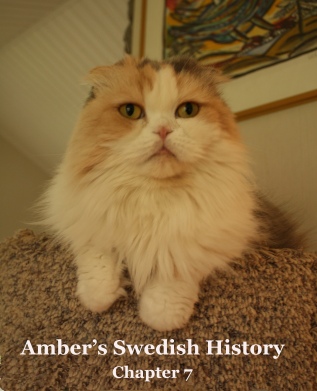Amber's Swedish History - Chapter 7

The Stockholm Bloodbath – 1520
Another Danish regent, Hans, the son of Kristan I, was the king of
Sweden, but got driven off. Two decades later Kristan II. another Dane,
decided he would take the crown.

Kristan II
The Danes were stronger than the Swedish
army. They resisted, but in time Kristan succeeded. He granted amnesty
for all who’d fought against him. The losers happily accepted Kristan’s
invitation to his coronation in Stockholm, where the new king had a
change of heart. He had his men kill all of the attendants who had once
opposed him, and their sympathizers. A hundred or more were executed in
what is now referred to as the Stockholm bloodbath. Kristan topped it
off by raising taxes, and passed a law prohibiting the carrying of
weapons. He was soon referred to as, Kristan he Tyrant.
He had gone too far. Gustav Eriksson, a
Dane, had not attended the deadly coronation, and tried to form a
peasant army in Darlarna, but the peasants had no interest.
Disappointed, he passed through the town and headed north. When people
heard about the bloodbath they changed their minds and sent three skiers
bring him back. They caught up with Gustav easily because he was not on
skis. They still celebrate this event in Darlarna, with the largest ski
race in the world, The Vasa Marathon. Thousands of Swedes
compete over a 90 kilometer course (56 miles). The race takes forever. I
tried to watch it on TV last year, but fell asleep.

Gustav Eriksson Vasa
Where was I? Gustav, known as Gustav Vasa,
came back and defeated Kristan he Tyrant. He had it pretty easy for a
while, as most of his competitors had been killed off. Gustav also
became a tyrant in the years that followed, but centuries later
historians would decide to make him a hero. It was now near the end of
the middle ages. A new era had begun, but Sweden didn’t have an army or a
navy, and the Danes had both. They would remain a threat.
Most Swedes farmed, and lived in houses with sod roofs. Goats and pigs
were running around all over the place, but nothing is written about
dogs because they weren’t important. Five thousand people lived in
Stockholm. They were mostly Swedish, but some Germans, Scots and Dutch
were there as well.
The king raised taxes again, and decided his people, who were Catholics,
would be better off as Protestants. This move gave him control over the
property of the church and its money. He became the richest man in
Sweden, owned five thousand farms, and a fleet of ships. A New Testament
was printed during his reign. It was the first major book published in
Sweden, and began with a forward by Martin Luther, another German.
Gustav wrote critical letters of advice to common farmers, which have
helped historians romanticize him as a beloved monarch, but they
terrified the farmers at the time.
“Oh, shit! Another letter from the king.” You can imagine.
Gustav’s picture was on Swedish money for a while.

He ruled successfully, but there were problems. Sweden’s economy tanked,
and the university at Uppsala was barley functioning. There were
uprisings by the peasants who were angry about the new taxes, and
changes to the church. Six revolts were put down, and their leaders
executed in public.
There were attempts to poison Gustav. He was also stabbed, and there was
a plan to blow him up by putting gunpowder under his seat at the
cathedral in Stockholm on Palm Sunday. It would have been a memorable
ascent to heaven, but one of the conspirators got drunk on aquavit and
spilled the beans. Eight people were arrested, and beheaded . . . seven
of them Germans. Kristan II thought it was a good time to return with an
army of mercenaries, but he was defeated and spent the rest of his life
in prison.
The peasants were now doing fairly well by now, except for the letters.
There were no serfs in Sweden. Farmers lived a simple life and owned
fifty percent of the land. They were described as crude, by Germans,
wore old-fashioned clothing, belched at the dining table, and slept on
the floor with their animals. Sounds okay to me, but there were rats, as
they could not afford to import cats in those days.
Coming Next – Duke Karl and Crime & Punishment in Sweden




No comments:
Post a Comment